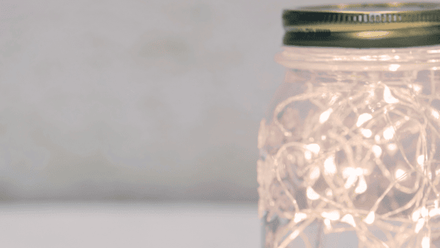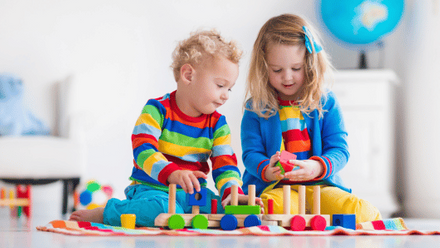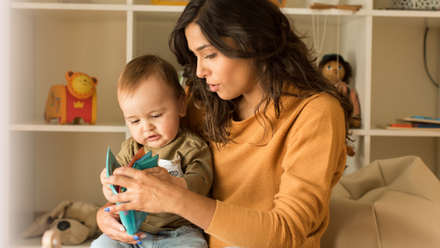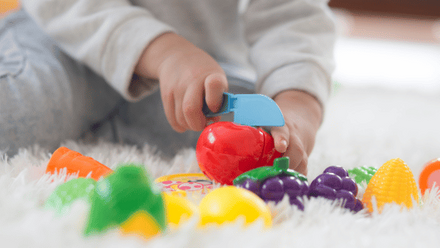The random object series: creative uses for silicone ice trays and moulds
One of the many joys of working in early education and care is that we can use opportunities creatively to bring new and novel ways into learning opportunities for everyone. From junk modelling to an abundance of loose parts play, nobody can utilise random objects quite like an early education and care professional!
This new blog series draws upon some of the weird, wise, and wonderful improvisations and insightful provocations that can come to life when we think a little bit more adventurously about the everyday items we have lying around.
October’s insight focuses on how we can use silicone ice trays to build engaging and effective learning opportunities for children in their early years. So, let’s go!
Silicone ice trays, and chocolate moulds, can be found in a variety of household stores, usually in the kitchenware aisle, but sometimes in the seasonal aisle. They come in all sorts of shapes and sizes – from standard ‘cubes’ to decorative characters and festive shapes. This range can make a provocation more in tune with target language or exploration theme but there’s nothing wrong with going simple by using a traditional cube tray too.
1. Create your own crayons
Wax crayons are a staple ingredient for the creative station of any early education and care setting. For younger children, they can be used to practice grip, whilst older children might get involved in other activities like wax crayon rubbings. But, as children navigate their own force and potential when colouring (sometimes a little bit too intensely!), crayons are prone to snapping, rendering them too small to be used by little fingers.
When this happens, instead of putting these small pieces to waste, utilise the opportunity to discuss sustainability with children, making the most of what we have and refraining from waste. Develop fine motor skills in a new way by asking them to help to peel off any wrappers, leaving the discarded crayons bare, before encouraging them to identify colours, sorting them into separate piles or mixing different tones together. Snapping these into smaller pieces again, add them to the silicone mould before safely microwaving for short intervals, until all of the wax has melted. Leave to set and then reveal your brand new crayon shapes to use again!
2. Scienced-based ice play
When it comes to learning about the winter season, temperature plays a big part in understanding how and why our climate changes to a chilly one, with jumpers and scarves taking the place of summer hats and shorts. Silicone ice cube trays can be used with the children to create their own ice cubes, that can later be explored in play. Involving the children in the whole process allows them to observe various changes. Left in a cold enough location, either a freezer or outdoors if temperatures are low enough, the children can observe the water turning into ice. Once removed from the colder location, either placed at room temperature or in warmer outdoor conditions, the children can observe how the ice melts to become water again.
Get creative...
Add paint or food colouring to water when filling your ice trays or moulds and allow children to engage in ‘ice painting’ with the finished product.
Investigate...
Freeze objects such as leaves, petals, mini plastic animals or sea creatures, in your silicone ice cube tray and pose the question to children about “how do we get them out?” Offer a range of tools that can be used to support this task, such as warm water, hammers, towels and paintbrushes to create an open-ended space for enquiry, thinking about how cold things are made warmer and what effects that brings.
3. Counting grid
An even 5 x 2 ice cube tray can revitalise its life into a tens frame to support counting and pattern recognition in an interactive way. Use the deeper pockets of the tray to support children’s counting and number recognition to 10, including number bonds, subitising and patterns.
This could be done in a variety of ways, but the open-ended possibilities of this structured learning resource make it possible to implement into roleplay scenarios, such as counting out change in a roleplay shop setting, or as a tool to support daily tasks, such as taking a register of who is in attendance today. Follow interests to engage and motivate children by thinking about what can be used to ‘mark’ or fill each space, creating a unique resource that every child can relate to differently.
4. How do things grow?
The small compartments of a silicone ice cube serve as the perfect starter home for plant seedlings. Filling each section with soil, encourage children to carefully plant a seed in each section, thinking sensitively about the importance of looking after each individual seed and their responsibilities within it.
The separate compartments make it clear for children to identify when growth and change start to occur, allowing them to carefully observe and focus on the individual spaces. It will also enable them to easily observe any seeds that do not thrive, rather than if they had all been scattered in one large tray.
Depending on your outcomes and the context in which this is set, you might choose faster growing seedlings such as cress, or those that take a little bit longer to cultivate, like sunflowers. Do take care to look at the planting times for plants to ensure they are in season and likely to succeed.
5. Sorting station
Having a number of different sections in a silicone ice tray creates a fabulous resource for engaging in sorting and categorisation activities.
Collect together a bowl full of small and novel resources, from pom poms to lego bricks and everything in between, mixed up in a bundle of colour, material and shape! Encourage children to identify the characteristics, including both similiarites and differences, amongst the plethora of resources and encourage them to think about the many ways to sort them. This might be by colour, shape or items that start with the same sound… the possibilities are endless! Encouraging children to introduce these ideas themselves offers an innovative way for children to directly influence their learning and creates a rich opportunity for collaboration and shared thinking with other children and adults.
Conclusion
Who would have thought a simple kitchen utensil could offer so much fun? These provocations are only the start! There are all sorts of avenues to take to use these handy, soft trays that are flexible in more ways than one. Have a go and share your finds in the Institute forum!





